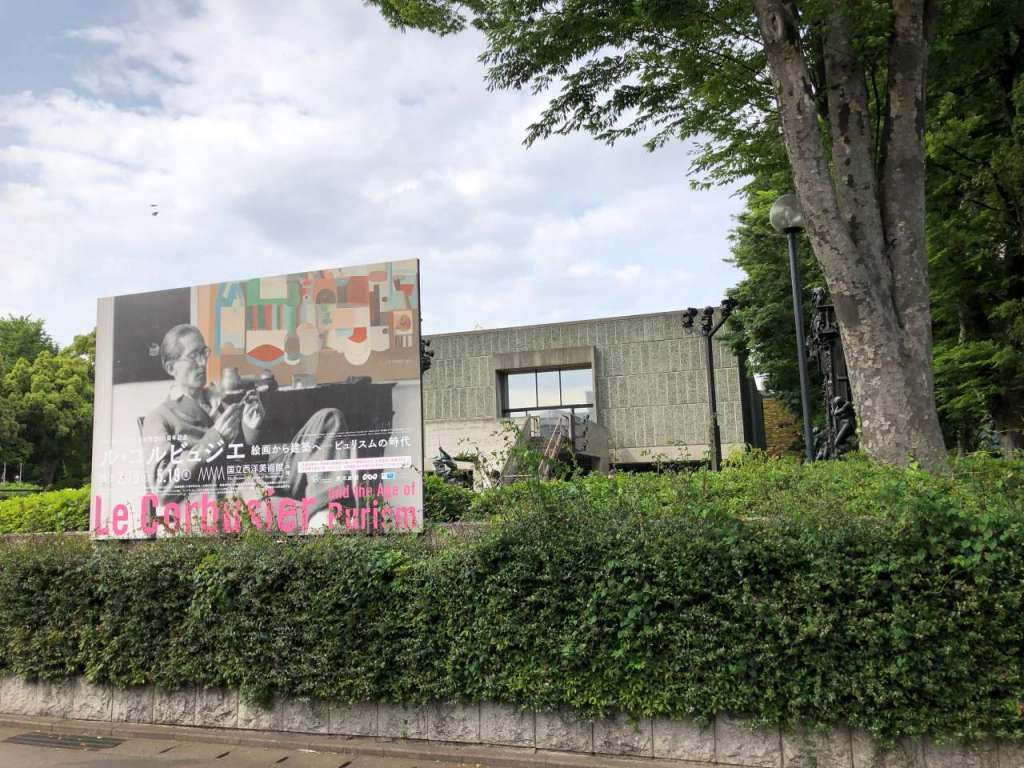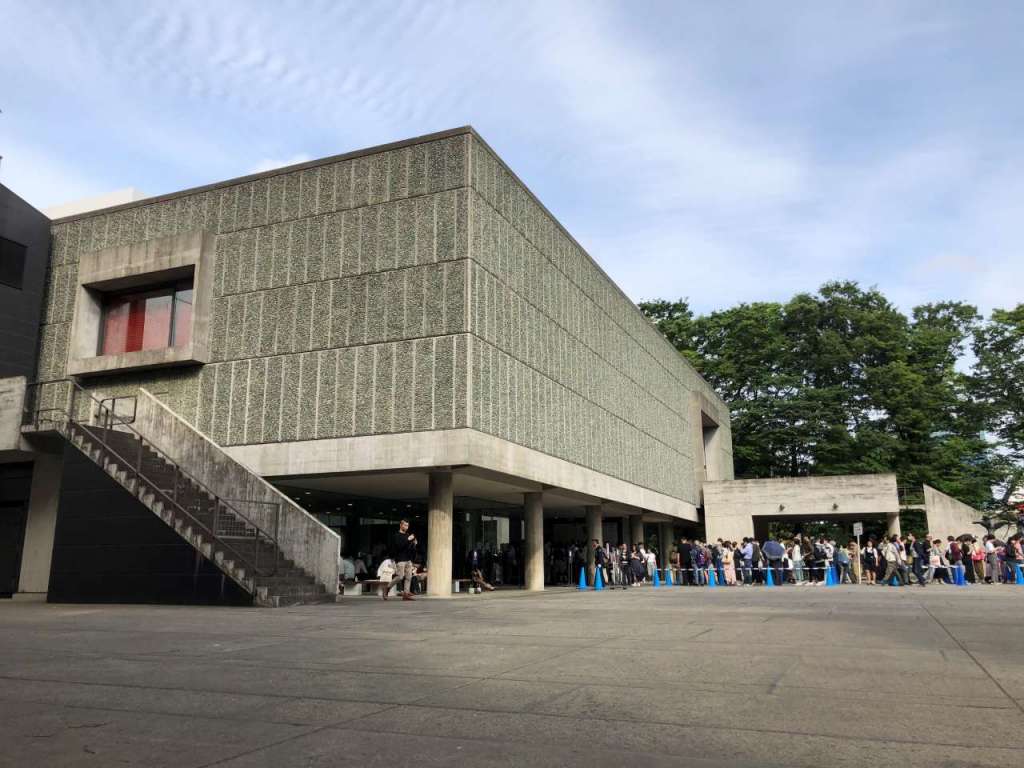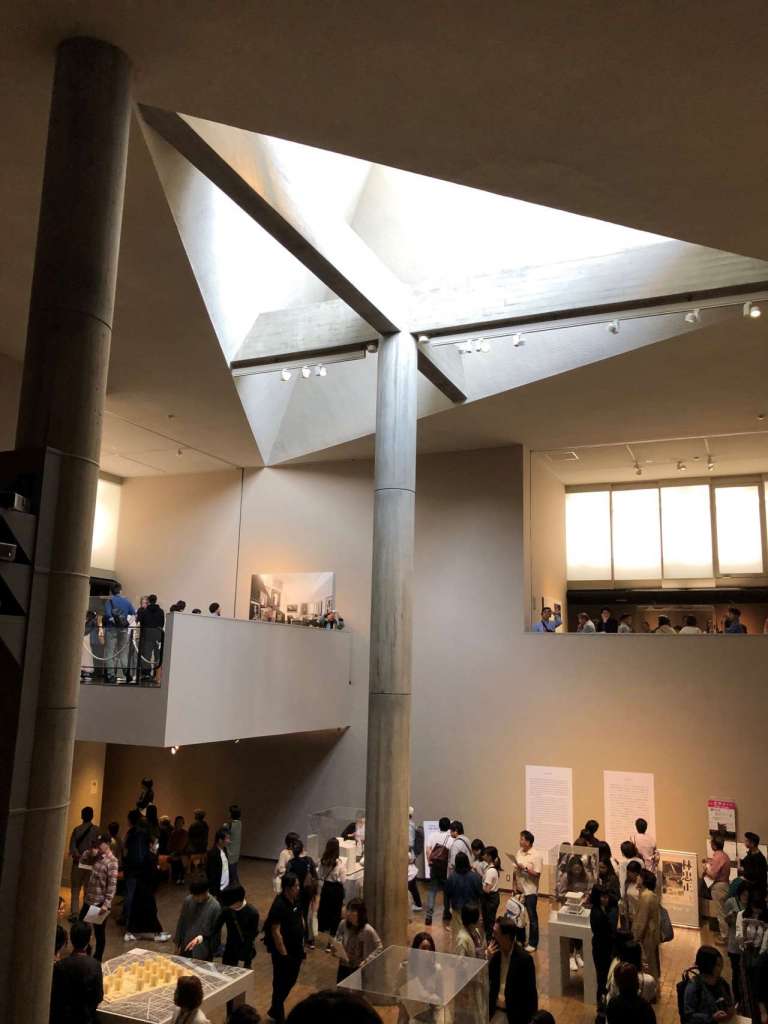“Tokyo Review 038″ Ueno area-1
Le Corbusier Exhibition at the National Museum of Western Art
“Le Corbusier exhibition” had been held at the National Museum of Western Art in Ueno Park. I was so interested in but I could hardly find a time to spare until May 18, the day before the last day. The building itself is a splendid art work by the “Pioneer of Modern Architecture” born in Switzerland. It was in 2016 that 17 works that are existing in seven countries were designated as UNESCO World Heritage as the “Le Corbusier’s architectural works”, including the “Villa Savoye” at the suburb of Paris. I didn’t want to miss the opportunity to appreciate the maestro’s own paintings inside his architectural work.
I got off at the “Park-Exit” of JR Ueno Station after many years since last time. As for the Ueno Station, the “Hirokoji-Exit” on the southeast side is at the first-floor level, while the Park-Exit on the west side is at the third-floor level with a height difference of nearly 20 meters. I remember that the plateau named “Sanno-dai” which has a bronze statue of Takamori Saigo is at the southern end of Ueno Park, the geography of which presents a sharp triangle. The east side of the plateau was the southern end of the ancient coastline called the “Nippori Cliff Line” that continues from Tabata Station on the jR Yamanote Line, and the west side of it was the Yata river (a tributary of the Shakujii River) which eroded the land and flowed into the sea.
In front of the Park Exit is the Tokyo Bunka Kaikan, and If you turn right after passing it, you can find the National Museum of Western Art. After looking at the exterior wall made of the concrete board with the pebbles embedded in the front, I lined up in a long queue at the Piloti in front of the main entrance. This “Piloti” is one of the five elements of modern architecture advocated by Le Corbusier. Watching its ceiling and pillars, you can feel the functional beauty that had cut off all the waste. Even it has Completed in 1959, it never looks getting old. Soon after entering the building, I could see the atrium space of the “19th Century Hall”. The geometrical top light of the ceiling was so beautiful, exactly the “L’espace indicible” which Le Corbusier mentioned. Even just watching this space, I thought it was worthy of coming.
The exhibits were mainly paintings. Thanks to a short excellent video introducing the Purism still life production process, I could understand that the golden ratio was used implicitly in the arrangement of still life. It is really a product of a genius who introduced “Modulor” (a coinage of module and the golden ratio made by Le Corbusier) to the world of architecture. In the latter half, when I saw the exhibition of the model of the Villa Savoye, I was completely fascinated by the world of Le Corbusier in a blissful time.
Once again, I realized that there are many places in Ueno where we can come into contact with such wonderful culture. Thus, I would like to walk in Ueno area for a while as the “Tokyo exploration” series. Please keep in touch!


